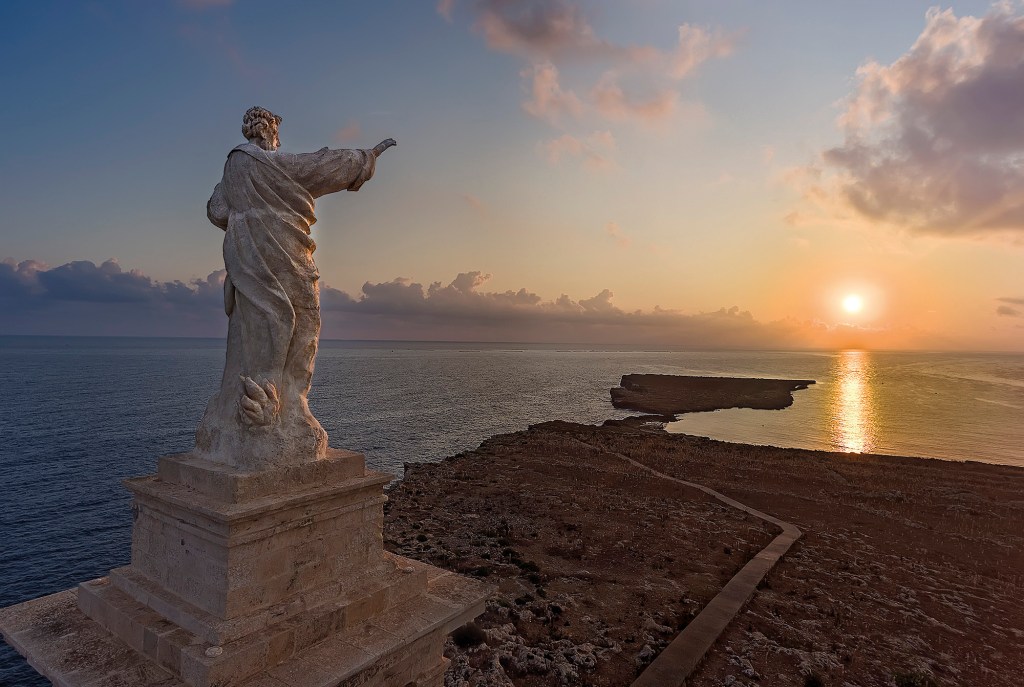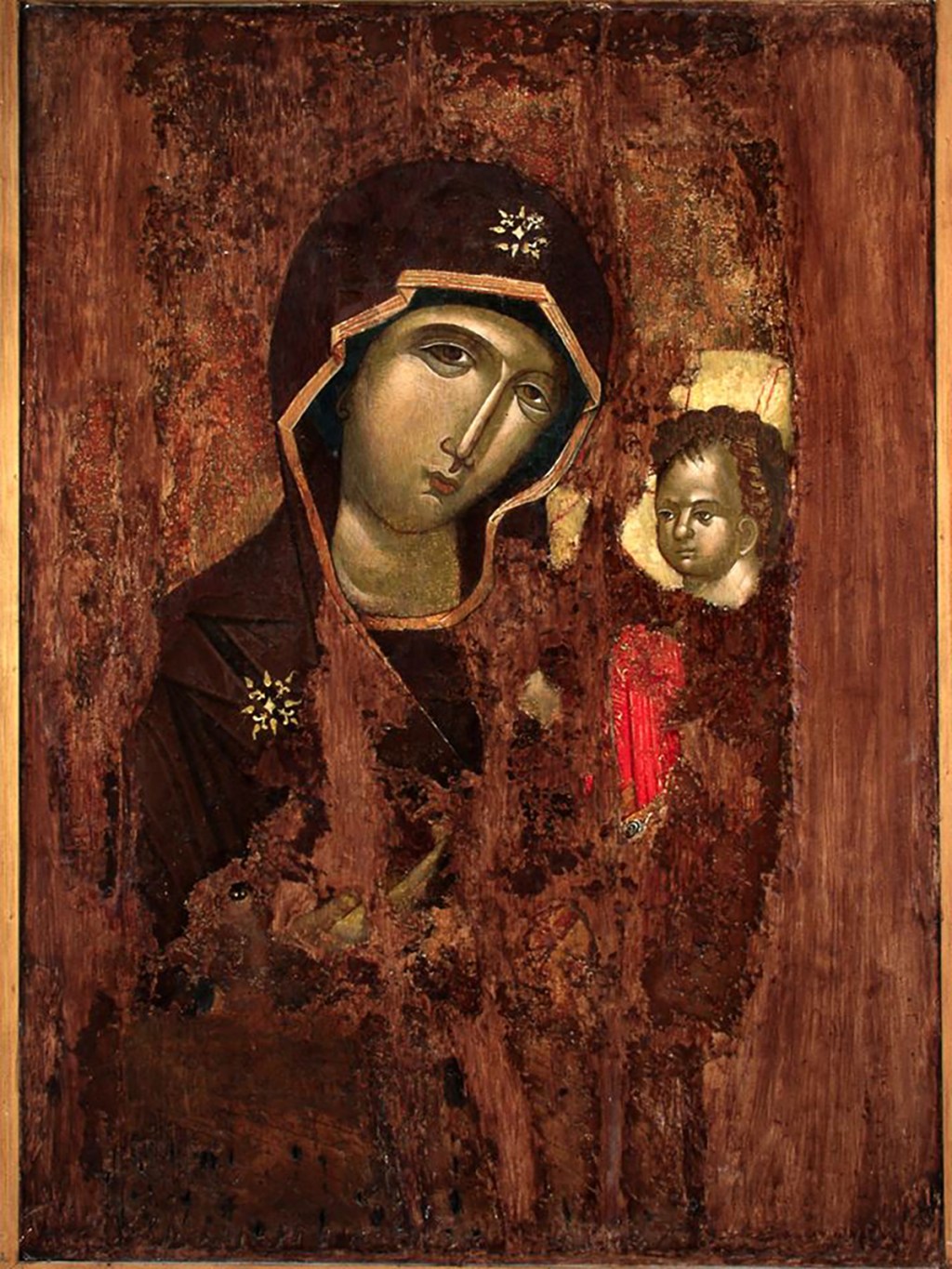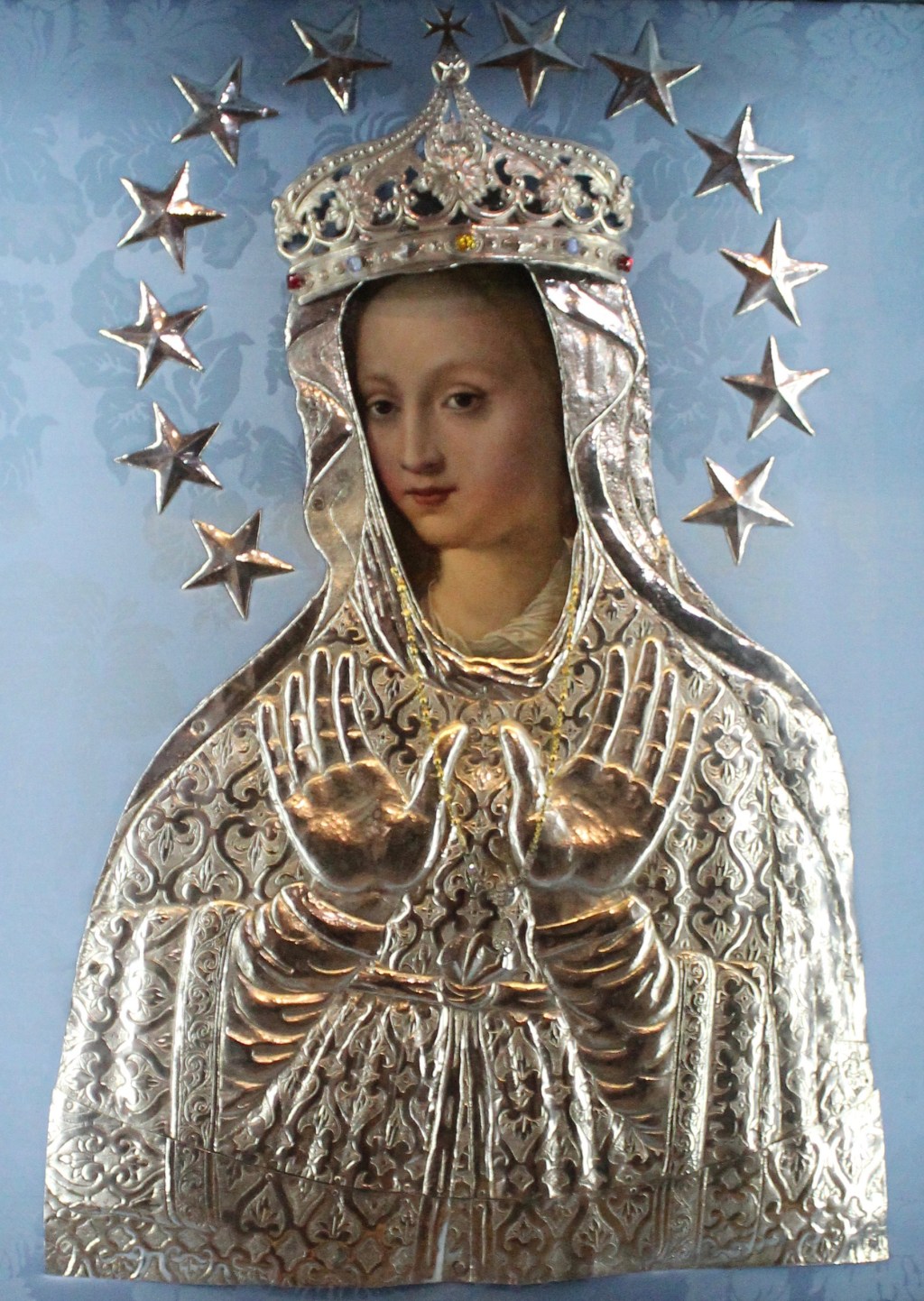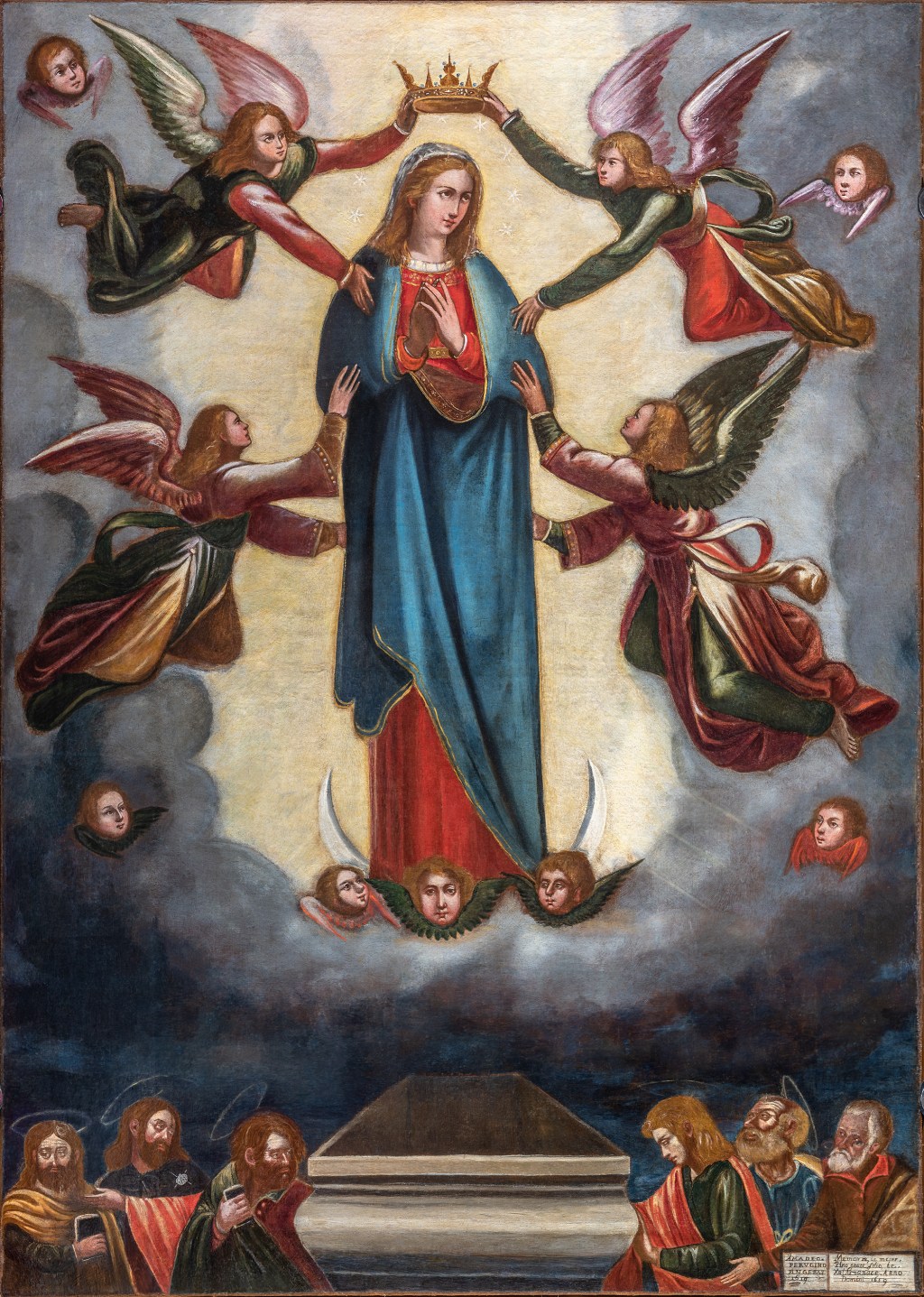At the crossroads of Europe, North Africa, and the Middle East, in the very heart of the Mare Nostrum, Malta has historically served as a reservoir of Mediterranean civilizations, cultures, and traditions – indeed, it is one of its very cradles. From the Greeks and Romans to the Normans and Moors, many powers sought to control this strategic archipelago, but it was the Maltese people’s resilient spirit that ultimately shaped their cultural landscape and heritage.
Today, Malta’s Christian traditions reflect its multicultural past and present, offering visitors a glimpse into the universality of the Christian message – but also, of the island’s deeply rooted faith.
Mary’s archipelago
Ancient Greek literature, whether Homeric or pre-Homeric, often provides detailed descriptions of its characters, focusing on their moral traits and notable physical features. Homer describes Achilles as having “fair” hair, and Athena’s eyes as “owl-like.” But biblical narratives are sparse in their descriptions of characters’ appearances. The Bible does not describe major physical features of key figures such as Moses or David, and even in the New Testament, there is little to no information on the physical appearance of Jesus or the apostles. Artists, therefore, relied on the artistic conventions of their time to portray these figures, including Mary, the mother of Jesus.
One tradition holds that Luke, the author of one of the Gospels, was also an exceptional painter and created the first “portrait” of Mary. Eastern churches honor him as the original “iconographer,” credited with creating the first icon of the Blessed Virgin Mary.
Luke was also Paul’s companion and scribe during his journeys around the Mediterranean. In the year 60, Paul was shipwrecked off the northwestern coast of Malta and spent the winter there. During his stay, he converted the island’s governor, Publius, healed the sick, and established the roots of Maltese Christianity. Luke recounts this story in Acts 28, describing how the islanders showed unusual kindness to Paul and his companions, and how Paul healed Publius’s father and many others.

Since then, the Maltese have remained among the most passionate Catholics in the world. With an uninterrupted two-millennia-long tradition of rich Christian heritage, it is no surprise that Malta has more than one church per square kilometer. There are enough chapels and churches in the archipelago for one to attend Mass in a different one almost every day for a year. And some of them are home to exceptional Marian icons and images – whether allegedly painted by Luke, or not. And although historians have debunked this claim, what is important is that these miraculous images point to one of the oldest Marian traditions in the Mediterranean.
Here, we present a collection of some of the legendary, miraculous Marian icons and images of Malta.
The Hodegetria at the Mellieha National Marian Shrine
According to tradition, this image of the Blessed Mother holding the Christ Child on her lap was painted directly on the rock by Luke in AD 60, when he reached Malta with St. Paul. Recent assessments by art historians indicate that the present version of the icon dates to the 12th or 13th century, displaying typical features of Byzantine iconography. The Blessed Virgin Mary is depicted as a majestic figure, wearing royal purple and looking directly at the viewer. A flower on her forehead symbolizes her virginity, while her finger points to the Christ Child as the source of salvation. This arrangement, known as the Hodegetria (“She who shows the way”), was typical of Byzantine Marian icons during the 11th and 12th centuries.
The icon has attracted pilgrims from all over the world, including Pope John Paul II, who prayed before it in 1990. Alongside 20 other Marian shrines, the Mellieha National Shrine is part of the European Marian Network. Christian practice at this site and the cave-church housing this icon likely predates the 13th-century Siculo-Byzantine icon. Tradition confirms that in 409, several Catholic bishops consecrated the grotto as a church, close to the Council of Ephesus of 431 when the Blessed Virgin was universally recognized as Theotokos. It is thus possible that the present icon of the Mater Dei is not the first icon of the Virgin in this sacred place.

References: The Icon of Our Lady of Mellieha: A Journey through the multi-disciplinary conservation project, Valentina Lupo and Maria Grazia Zenzani (Aletier del Restauro Ltd.), Treasures of Malta No. 67 Christmas 2016, Volume 23, Issue 1; The National Shrine of Our Lady of Mellieha, from The Archdiocese of Malta.
St. Luke’s Madonna at the Mdina Metropolitan Cathedral
The icon depicting the Virgin with the Child Jesus, housed at the Metropolitan Cathedral of St. Paul in the old Maltese capital of Mdina, was once also believed to have been written by St. Luke in the 1st century. Art historians now agree that it dates to the late Middle Ages. Its presence at the Cathedral can be traced to at least 1588. This icon played a crucial role for local believers, being carried annually during the procession held in Mdina in thanksgiving for the Great Siege victory. In 1604, Bishop Gargallo placed it on the main altar of the Cathedral, covering it with a silver lamina that left only the faces of the Blessed Virgin Mary and her child Jesus visible. By 1615, this icon stood on the main altar beneath the great polyptych of St. Paul.
Mdina was founded as Maleth by the Phoenicians in the 8th century BC and later renamed Melitæ by the Romans. The earliest reference to a Cathedral Chapter in Malta goes back to 1299. However, the history of the site of the Mdina Cathedral is much older. Tradition claims the cathedral is built on the very same place where the Roman Governor Publius met St. Paul right after his shipwreck. Indeed, archaeologists have found Roman remains in the crypt of the cathedral. Even though it is virtually impossible to claim that this was, in fact, Publius’ own house, the finding still somehow supports this tradition. However, another strong tradition claims that Publius might have had his first encounter with the Apostle at San Pawl Milqi, also having archaeological remains of a Roman villa and a close-by Paleo Christian / Roman site.

The present Baroque cathedral, built between the end of the 17th and beginning of the 18th century, replaced the old one severely damaged by an earthquake in 1693. Once the new cathedral was built, this precious icon retained its prominent position, placed on the altar of the Blessed Sacrament chapel where it has remained ever since. In 1898, Pope Leo XIII authorized the official coronation of the “St. Luke Madonna.”
References: Letters by Pope Gregory the Great to Lucillus, Bishop of Malta, dating between AD 592 and AD 599, show that Malta already had a fully-fledged Christian community with its own Church and Bishop.
Marian icons of the Greek Catholic Church
The 12th-century icon of “Our Lady of Damascus” (Damaskinì – known as the Damaxxen in Malta) and the 14th-century icon of “Our Lady of Mercy” (Eleimonitria) were taken to Malta by Christian refugees escaping from Rhodes following Islamic invasions. These icons found refuge in the Greek Byzantine Catholic Church of Our Lady of Damascus. Both icons display a color scheme typical of Syrian icons (gold and dark purple) and depict the Blessed Virgin Mary looking straight into the viewer’s eyes, as she holds Christ Child in her left arm –in typical Byzantine fashion.

When the Turks besieged Rhodes in 1522, the two icons were taken to the church of St. Demetrius within the city walls for safety. The Knights of St. John and the local Maltese population held these icons in great veneration. Grand Master Jean Parisot de la Valette, in particular, was a fervent devotee and prayed regularly before the Damascene icon, especially during the Great Siege of 1565.
When the siege was lifted, de la Valette prayed before the icon of Our Lady in the Greek church and parish, at the time in Birgu (renamed Citta Vittoriosa, after the miraculous victory of the Great Siege in 1565), presenting his hat and sword as a votive offering of gratitude. These items still hang in the museum of the Birgu parish. A Greek Catholic church in Valletta was completed in 1580, and after a few years it became the parish church for the Greek community on the Maltese Islands. In 1587 the Damascene icon was transferred with great pomp and ceremony from Vittoriosa to its new church in Valletta. The Greek Catholic parish in Birgu ceased to exist in 1832.

References: Borg V., Various Marian Devotions – The Damascena. Marian Devotion in the Islands of St. Paul. 1983. The Historical Society 1983; Buhagiar M., The Virgin of Damascus in the Greek Catholic Church, Valletta, Malta The Shared Veneration of a Miracle-Working Icon. Department of Art and History, University of Malta.
The icons of the Blessed Virgin of Philermos (Black Madonna of Malta) and the Caraffa Madonna at St. John’s Co-Cathedral
St. John’s Co-Cathedral in Valletta is home of the Chapel of the Madonna of Philermos (also known as Panagia Filevremou, the Blessed Virgin of Philermos, Black Madonna of Malta). This chapel was built specifically to house the icon of the Madonna of Philermos, taken to Malta by the Hospitallers (The Order of St. John, the Sovereign Military Order of Malta) after being expelled from Rhodes. According to tradition, a pilgrim returning from the Holy Land took the icon to the Greek island. The Knights considered this icon, which they venerated since their settlement in Rhodes in 1307, as miraculous.

When Malta was occupied by Napoleon in 1798, the Panagia Filevremou followed Grandmaster Hompesch into exile. Today, the Chapel of the Blessed Sacrament houses another glorious icon: the silver-clad icon of the Caraffa Madonna, carried in procession annually on the day of the Immaculate Conception, December 8. The Caraffa Madonna was donated to the Conventual Church by Prior Fra Girolamo Caraffa. After the Madonna of Philermos was taken away in 1798, the Caraffa Madonna was relocated to the Chapel of the Madonna of Philermos.
After leaving Malta, the icon was given to Czar Paul I of Russia, who had been elected Grandmaster of the Order. During the Russian revolution of 1917, the icon was taken out of Russia and given to the Czarina Maria Feodorovna. After other vicissitudes, it was entrusted to King Alexander of Yugoslavia and kept in Belgrade. At the time of the German invasion in 1941, it was moved to Montenegro, where it is kept in the National Museum.

References: Restoration Of St John’s Co-Cathedral now focusing on ‘Black Madonna’ chapel. The Malta Independent, 23 August 2009; Zammit Cabaretta A., The Order of St. John and the Devotion to the Blessed Virgin Mary. Marian Devotion in the Islands of St. Paul. 1983. The Historical Society 1983.
Our Lady of Victories icon at Our Lady of Victories Church
In Valletta, Malta’s capital, the Church of Our Lady of Victory houses a Byzantine icon of unknown origin. Tradition suggests that Grand Master Adolf de Wignacourt (1601-1622) donated this icon to the church. The icon features a delicately painted copper face and a finely engraved silver riza. The church, built in 1567 as a thanksgiving to the Virgin Mary for her aid during the Great Siege of 1565, was constructed on the site where the foundation stone of Valletta was laid on March 28, 1566. Initially, it served as the first place of worship for the Knights of the Order of St. John.
Grand Master Jean Parisot de la Valette, who financed the church’s construction, died on August 21, 1568. He was originally buried here, but his remains were later transferred to the crypt of St. John’s Conventual Church (St. John’s Co-Cathedral) in Valletta. In 1716, Maltese artist Alessio Erardi was commissioned by Grand Master Ramon Perellos y Roccaful to paint the vaulted ceilings with magnificent scenes depicting the life of the Blessed Virgin Mary.

References: Zammit Cabaretta A., The Order of St. John and the Devotion to the Blessed Virgin Mary. Marian Devotion in the Islands of St. Paul. 1983. The Historical Society 1983.
Our Lady of Ta’ Pinu Shrine
The Marian Shrine of Ta’ Pinu in Malta is an exceptional site, not only because of its calm, majestic architecture, but mainly because of the miraculous events associated with it. Originally a small chapel dedicated to the Assumption, it was later named Ta’ Pinu after Pinu Gauci, the procurator of the Church in 1598. The chapel became famous in 1883, when Karmni Grima, a pious woman from Għarb, heard a mysterious voice calling her three times. She was led to the chapel, where the voice instructed to recite three Hail Marys. She kept this secret for two years until she shared it with Franġisk Portelli, who had a similar divine encounter. His mother’s miraculous healing further solidified the chapel’s reputation for divine intervention.
The image of Our Lady of Ta’ Pinu, central to these events, depicts the Blessed Virgin Mary radiating serenity and compassion. This traditional image is naturally revered for its association with the miraculous experiences of Karmni and Franġisk. Pilgrims flock to the shrine, as is evidenced by the numerous ex-votos that adorn its walls testifying to miracles of all sorts.

Unsurprisingly, the shrine is known as the “Church of Miracles,” as it serves as a beacon of faith where devotees seek comfort, healing, and blessings. The image of Our Lady of Ta’ Pinu, prominently displayed in the original chapel behind the main altar, continues to be the focal point of prayer and devotion. The sanctuary is itself a crossroads of history, faith, and divine intervention, making it a significant Marian pilgrimage site.
References: “The Shrine of Ta’ Pinu and its Miraculous Madonna,” Gozo Ministry of Tourism; Camilleri P., “Miracles and Veneration: The Story of Ta’ Pinu,” Gozo Heritage Review.
Our Lady of Mount Carmel, Basilica of Valletta
Our Lady of Mount Carmel is another beloved devotion in the Maltese Islands. Central to this tradition is a unique titular painting that portrays the Virgin Mary bestowing the brown scapular to St. Simon Stock and comforting the Holy Souls in Purgatory, with milk expressed by the Infant Jesus from her breasts. The image, kept in the Basilica of Valletta, underscores the theological message that Jesus grants graces through His Mother, emphasizing Mary’s intercessory role. The painting also depicts the 3rd-century martyr St. Agatha, a patroness of the Maltese Islands.
Brought from Sicily, this painting is an integral part of the Carmelite tradition in Malta. The Carmelites, who arrived from Sicily in 1418, built their first church in Valletta in 1586. This church, dedicated to Our Lady of Mount Carmel, became the principal Marian shrine after being rebuilt as a monumental basilica following its destruction during World War II.

Crowned by the Vatican Chapter in 1881, the painting is the first in the Maltese Islands to receive such an honor. It features the Virgin Mary seated on a royal throne with the Child Jesus. The image is surrounded by rich symbolic elements: Mary’s throne is reminiscent of the cloud of Elijah’s vision, with a crescent moon under her feet, presenting her as the New Woman of the Apocalypse. Two angels crown her, further illustrating her status as Queen of Heaven and Earth. This painting serves as a focal point for liturgical ceremonies in the basilica. Despite being a site of significant local veneration, the Basilica somehow remains lesser known among tourists, highlighting a need for broader recognition of this particular Marian devotion.
Final thoughts
These venerated Marian icons and images of Malta, considered miraculous by the faithful, bear witness to the islands’ profound Marian devotion. They evidence a deeply rooted ancient tradition that continues to inspire and attract pilgrims from around the world. Through these sacred images, Malta’s enduring legacy of Marian reverence and its historical significance are vividly preserved, offering a powerful testament to the universality and enduring strength of the Christian message.
As Malta continues to honor its deep Marian heritage, the legacy of these miraculous icons remains a beacon of faith and devotion, connecting the past with the present and providing a vital spiritual touchstone for generations to come. Whether through centuries-old traditions or modern-day pilgrimages, the reverence for these Marian images are part of the beating heart of the Mediterranean Christian faith.
This content has been brought to you in partnership with VisitMalta



